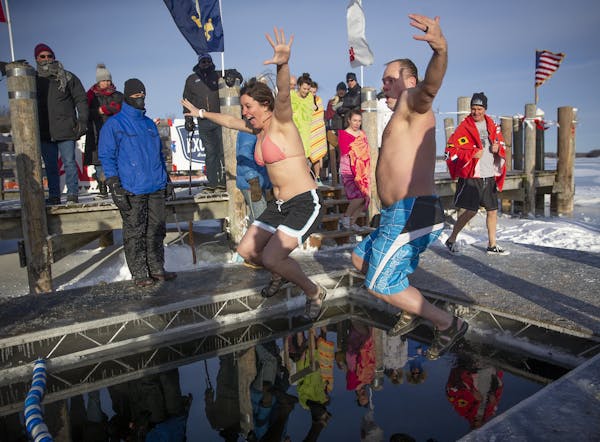Leave the balaclavas on the closet shelf and dig out the shorts: A heat wave — relatively speaking — is rolling into the metro area to kick off 2019.
The new year launched Tuesday with readings hovering around zero degrees, but temperatures were forecast to reach at least 32 degrees as early as Thursday.
Star Tribune meteorologist Paul Douglas said the late-week thaw will stick. He expects a stretch of at least nine balmy days above freezing with some of those days hitting 40 degrees, which for many Minnesotans is well within the comfort zone for shorts and/or sandals.
The first two weeks of January are traditionally the coldest of the winter before temperatures begin to trend up after Jan. 17. The short-term forecast would seem to buck that tradition. "We're going to have quite a January thaw," Douglas said.
In fact, he was willing to say that all of January will be relatively pleasant. But weather forecasts for more than 10 days get wobbly, as evidenced by what Douglas was willing to wager on his.
"I'd bet a stale bagel January will be milder than usual," he said.
December already was warmer than usual, he said.
The month wrapped up Monday with temperatures 6 degrees higher than average, with the average temperature for the entire month at 26 degrees.
The warmest day last month was 46 degrees and the coldest was 6 degrees.
Alas, those who prefer their winters snowy won't be happy with the anticipated dry weather from the west. Douglas forecasts no significant precipitation in the coming 10 days. That means no snow, or another spooky winter rainfall, in the near future.
Snowstorms typically come up from the southwest after gathering moisture from the Gulf of Mexico, Douglas said. That weather will stay south of Minnesota for now.
With heat replacing the usual early January deep freeze, the metro area could be in store for a mild winter. "That's not to say we aren't going to get more arctic slaps — we will," Douglas said.
He predicted that El Niño, the warming of the ocean surface in the central Pacific, will deliver a milder winter to Minnesota before adding, "Then again, that could be wishful thinking."
On the literally brighter side, the days are getting longer. Douglas noted that we have picked up 4 minutes and 38 seconds of sunlight since the solstice on Dec. 21.
The bad news? The coldest days are usually the brightest, so clouds are more likely with the coming warmer weather. The good news is that January and February are not the grayest months. Those would be November and December — and they're in the rearview mirror now.

Fired Mpls. teacher accuses management of 'cancerous rot'

Jill Biden rallies women, teachers for the Biden-Harris ticket in Bloomington speeches
Neighbors, city officials at odds over Rochester lake dam

Souhan: This is KAT's chance to prove Flip Saunders was right

